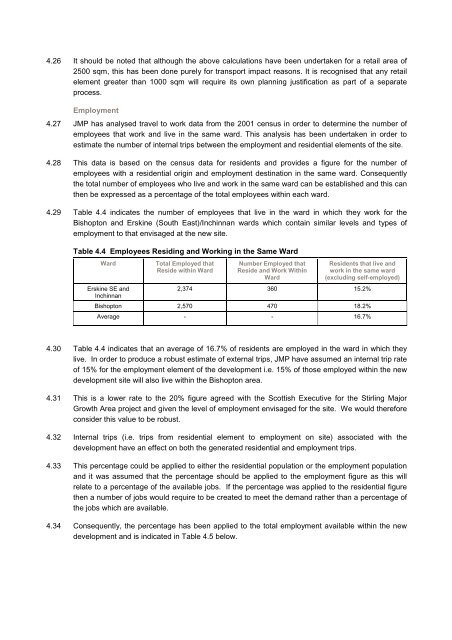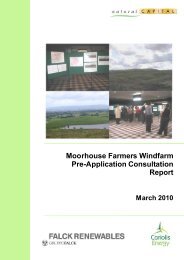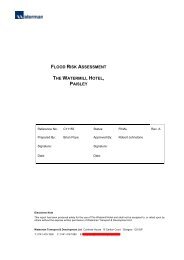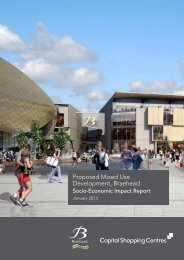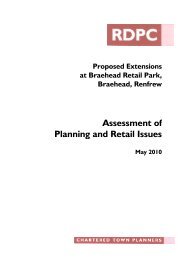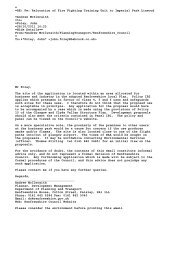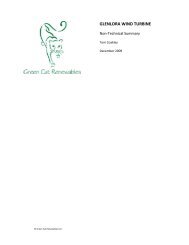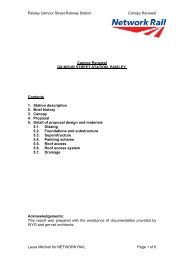Traffic Assessment - Renfrewshire Council
Traffic Assessment - Renfrewshire Council
Traffic Assessment - Renfrewshire Council
Create successful ePaper yourself
Turn your PDF publications into a flip-book with our unique Google optimized e-Paper software.
4.26 It should be noted that although the above calculations have been undertaken for a retail area of<br />
2500 sqm, this has been done purely for transport impact reasons. It is recognised that any retail<br />
element greater than 1000 sqm will require its own planning justification as part of a separate<br />
process.<br />
Employment<br />
4.27 JMP has analysed travel to work data from the 2001 census in order to determine the number of<br />
employees that work and live in the same ward. This analysis has been undertaken in order to<br />
estimate the number of internal trips between the employment and residential elements of the site.<br />
4.28 This data is based on the census data for residents and provides a figure for the number of<br />
employees with a residential origin and employment destination in the same ward. Consequently<br />
the total number of employees who live and work in the same ward can be established and this can<br />
then be expressed as a percentage of the total employees within each ward.<br />
4.29 Table 4.4 indicates the number of employees that live in the ward in which they work for the<br />
Bishopton and Erskine (South East)/Inchinnan wards which contain similar levels and types of<br />
employment to that envisaged at the new site.<br />
Table 4.4 Employees Residing and Working in the Same Ward<br />
Ward Total Employed that<br />
Reside within Ward<br />
Erskine SE and<br />
Inchinnan<br />
Number Employed that<br />
Reside and Work Within<br />
Ward<br />
Residents that live and<br />
work in the same ward<br />
(excluding self-employed)<br />
2,374 360 15.2%<br />
Bishopton 2,570 470 18.2%<br />
Average - - 16.7%<br />
4.30 Table 4.4 indicates that an average of 16.7% of residents are employed in the ward in which they<br />
live. In order to produce a robust estimate of external trips, JMP have assumed an internal trip rate<br />
of 15% for the employment element of the development i.e. 15% of those employed within the new<br />
development site will also live within the Bishopton area.<br />
4.31 This is a lower rate to the 20% figure agreed with the Scottish Executive for the Stirling Major<br />
Growth Area project and given the level of employment envisaged for the site. We would therefore<br />
consider this value to be robust.<br />
4.32 Internal trips (i.e. trips from residential element to employment on site) associated with the<br />
development have an effect on both the generated residential and employment trips.<br />
4.33 This percentage could be applied to either the residential population or the employment population<br />
and it was assumed that the percentage should be applied to the employment figure as this will<br />
relate to a percentage of the available jobs. If the percentage was applied to the residential figure<br />
then a number of jobs would require to be created to meet the demand rather than a percentage of<br />
the jobs which are available.<br />
4.34 Consequently, the percentage has been applied to the total employment available within the new<br />
development and is indicated in Table 4.5 below.


